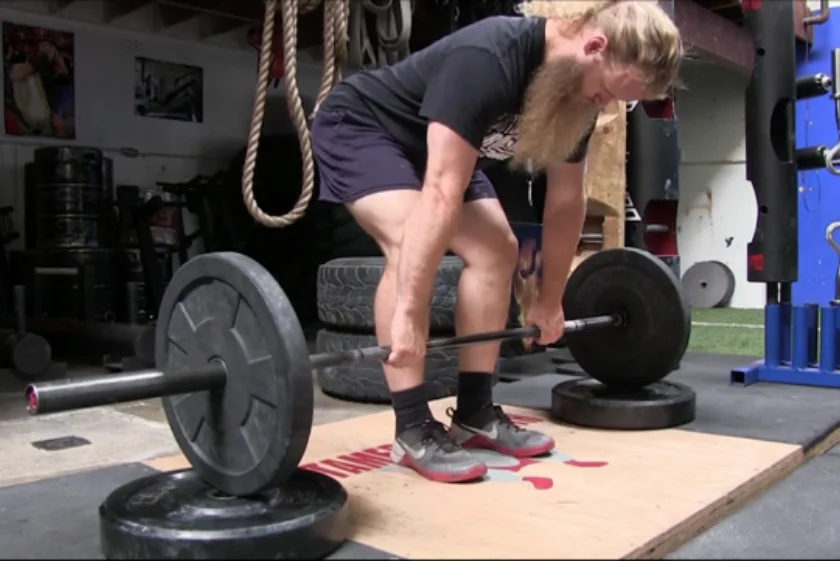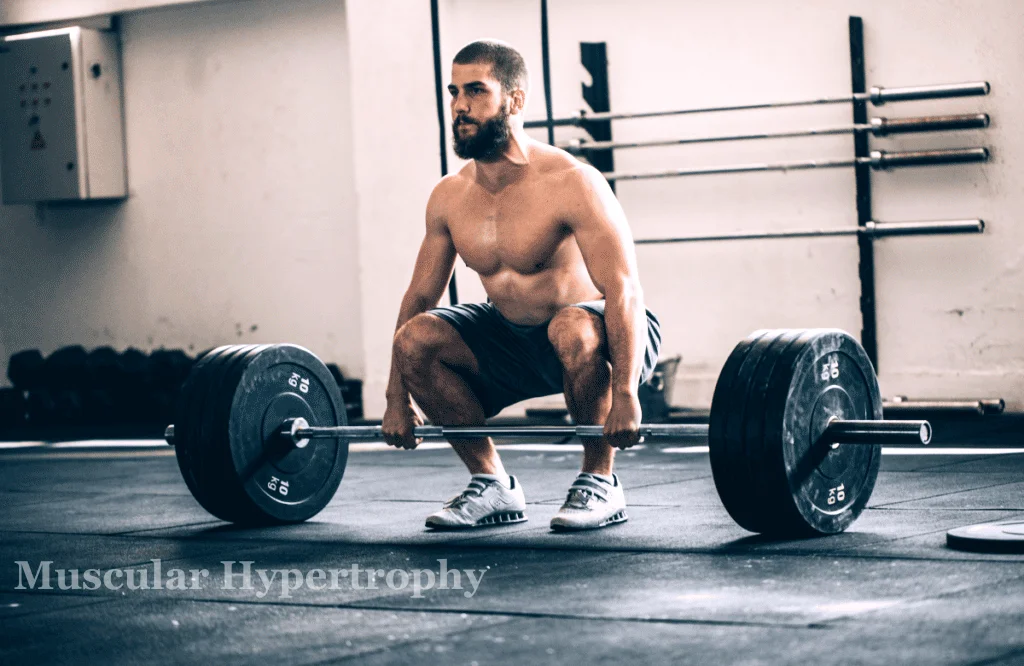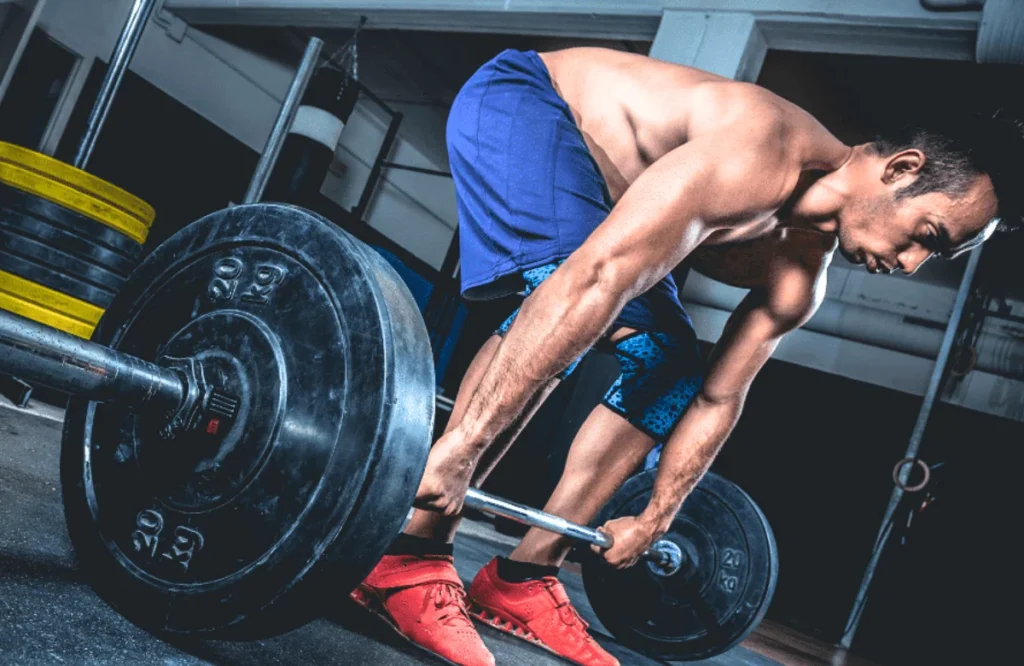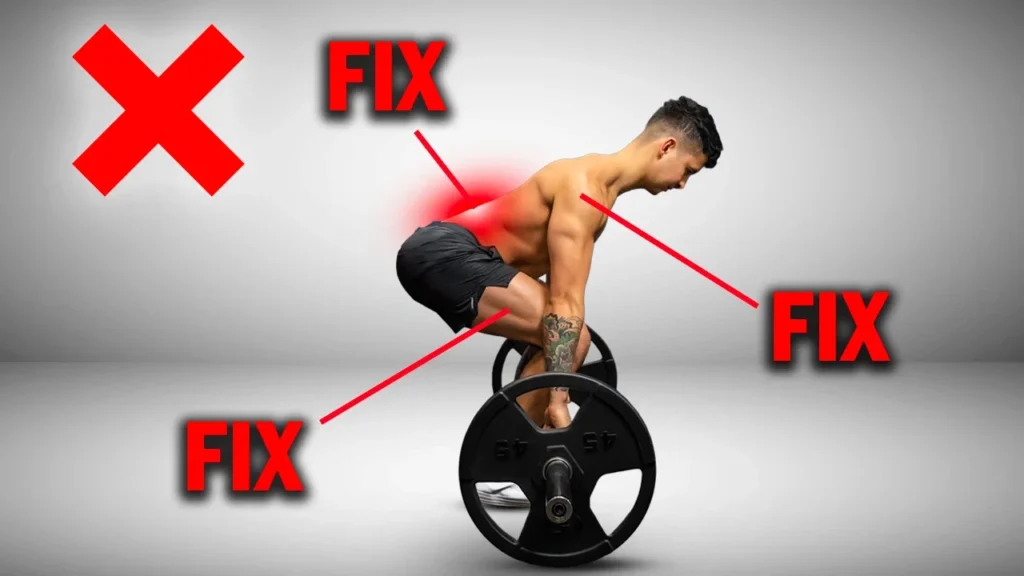In strength and conditioning, few exercises rival the Romanian Deadlift (RDL) regarding its versatility and impact on overall athletic performance.
In this comprehensive exploration, we delve into the multifaceted benefits the Romanian Deadlift offers Olympic weightlifters, powerlifters, and fitness enthusiasts.
From its foundational role in biomechanics to its specific applications in various sports, the RDL emerges as a cornerstone movement for anyone striving to enhance strength, power, and muscular development.
Foundational Movement and Biomechanics

At the heart of the Romanian Deadlift lies its ability to teach the essential movement and biomechanics of standing hip flexion and extension.
This foundational movement is integral to squatting, whether in the gym with added resistance or in daily life while lifting objects from the floor.
Strength and conditioning expert Tony Gentilcore underscores the significance of the RDL in enhancing movement skills and body awareness.
By dissociating hip movement from lumbar movement, individuals can reduce the risk of injury, particularly to the lower back.
The RDL functions as a dynamic counterpart to the plank, engaging deep spinal muscles for stability while facilitating controlled hip flexion and extension movement.
This, in turn, strengthens the posterior chain muscles responsible for extending the hip and knee when the foot is planted on the ground.
Additionally, the RDL contributes to endurance strength in the deep core stabilizers, which are crucial for maintaining spine position, and fortifies the forearm flexors to develop a robust grip.
Muscular Hypertrophy
Muscular hypertrophy, the cornerstone of force development, power, and long-term improvements in sports performance, is a central benefit of the Romanian Deadlift.

This compound movement can potentially increase muscle mass in the hamstrings, glutes, and lower back while mitigating the risk of injury due to the relatively lighter loads compared to the conventional deadlift.
The semi-locked knees and emphasis on specific muscle engagement allow athletes and coaches to target essential muscle groups with greater precision, minimizing the need for excessive volume and loading.
Olympic Weightlifting Applications
With a namesake rooted in Olympic weightlifting, the Romanian Deadlift finds high specificity in movements such as the clean, jerk, pull, and snatch.
Named after Romanian weightlifter Nicu Vlad, a multiple Olympic medalist, this movement enhances positional strength in the lower back, hips, and hamstrings.
It mirrors the positions required during the first pull and transitions between the first and second pulls in the clean and snatch, making it a valuable tool for weightlifters seeking to refine technique and build specific strength.
Increasing Deadlift Performance

For those aiming to boost conventional deadlift performance, the Romanian Deadlift proves to be an effective accessory lift.
Strength in the hamstrings, lower back, and hips is often a limiting factor in successfully lifting heavy deadlifts, especially beyond the 500lb mark.
The controlled and intentional nature of the Romanian Deadlift allows lifters to develop and strengthen these crucial pulling muscles, contributing to improved deadlift performance.
Enhancing Hip, Hamstring, and Lower Back Performance
The Romanian Deadlift benefits various sports and fitness activities involving powerful hip extension and posterior chain engagement.
Athletes performing activities such as running, sprinting, and jumping stand to gain increased muscle engagement, improved movement patterning, and enhanced resistance to lower back stress and dysfunction.
By targeting the muscles involved in these dynamic movements, the RDL becomes a valuable tool for athletes seeking to optimize performance and reduce the risk of injury.
Injury Prevention

Lumbar control, hamstring and glute strength, and proper hip hinge patterning prevent injuries during deadlifts, cleans, and other front-loaded movements.
The Romanian Deadlift is an instructional tool to teach correct hip function, build positional awareness and strength, and increase muscular hypertrophy.
By addressing deficiencies in posterior chain strength and mechanics, athletes can minimize the risk of lumbar stress, strain, and injury, making the RDL a valuable addition to injury prevention protocols.
Final Words
In conclusion, the Romanian Deadlift emerges as a highly beneficial movement for athletes across diverse sports and fitness disciplines.
Whether enhancing biomechanics, fostering muscular hypertrophy, or refining specific weightlifting techniques, the RDL proves its worth as a dynamic and versatile exercise.
However, as with any training program, careful consideration of when, why, and how to implement the Romanian Deadlift is crucial.
Coaches and athletes must recognize the additional stress this movement introduces and tailor its inclusion to suit individual needs and goals.
Ryan Summers, a seasoned expert in the field, emphasizes the fundamental nature of the Romanian Deadlift, highlighting its role in building functional strength with a short learning curve.
While he acknowledges the benefits of deadlifts, he cautions against certain variations, such as deficit deadlifts, citing potential risks that may outweigh the rewards. In pursuing comprehensive fitness gains, the Romanian Deadlift stands as a powerful ally.
Its ability to teach proper movement, enhance muscular development, and contribute to injury prevention makes it a staple in strength and conditioning programs worldwide.
As athletes and fitness enthusiasts harness the potential of the Romanian Deadlift, they embark on a journey of unlocking strength, power, and resilience in pursuit of their fitness goals.